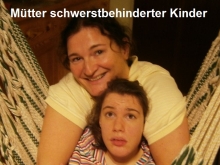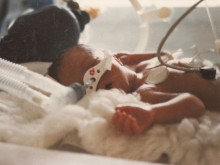On to the nursing home with old people? Austria is in the care of the inpatient way.
What we really want: participation or Segregation, of a growing segment of the population?
 Further New and Expansion of the “homes” to the recon concept or freeze and removal of existing places? Reversal of the help system in favour of nationwide individually - needs-coverage, community-based, cross-linked support services for people with support needs in their self-chosen home, the same part is entitled, taking “part of giving”, not on the edge, but in the middle of the company?
Further New and Expansion of the “homes” to the recon concept or freeze and removal of existing places? Reversal of the help system in favour of nationwide individually - needs-coverage, community-based, cross-linked support services for people with support needs in their self-chosen home, the same part is entitled, taking “part of giving”, not on the edge, but in the middle of the company?
Which way is desirable for the future and for society?
With regard to the demographic development (Ageing) is set in Austria on the concept of inpatient care in so-called “homes”. The State Of Lower Austria, for example, has just invested 205 million euros in 725 additional nursing care beds and sees in it “a large piece of on the way to a social model region”.1 Lower Austria has the goal that everybody who needs care in a nursing home, she gets also.
The demand for places is, in fact, due to the elimination of the members ' recourse in respect of children (share of the costs of children for their elderly parents in the home)2 since 2008, increased. But that's only because the Development and promotion of forms of Support to remain in need of Care in their own home in Austria by the policy for decades grossly neglected. Actually, almost no one want to go to “home”, as all surveys show. Soon it will be hot:
“Imagine, there are many homes and no one comes!”
So what is really needed?
These questions goes Like. Christian F. freisleben-Teutscher in an article dated 2.7.2009 (print) or 9.7.2009 (online) in the current Issue no. 27 of the “Doctors week” Springer medonline (Springer-Verlag, Vienna).
The opinions and points of view from different perspectives, ranging from critical and self-critical, to the visionary. There is agreement in the assessment of a development is overdue, the failure of the policy to date, slowed or prevented.
- On to the nursing home with old people? Austria is in the care of the inpatient way.
Mag. Christian F. Freisleben-Teutscher:
Even in remote regions will be built with Pride to new homes – often one-dimensional and a little future-oriented response to the challenges of the demographic development.The Land of lower Austria will invest up to 2010, over 205 million euros in additional 725 beds in nursing homes. So that crucial steps would be put on the path to a "social model region" and also over 2,800 new jobs created. Messages, how you from any state could come.Even more: A Church that is built in a nursing home as a "pioneering" step. However, the question is whether this is necessary, the only possible and correct answer to the rising cost of care. In countries such as Denmark is already set for decades, to the reduction of care home places and a strengthening of outpatient and mobile structures. Thus, it allows much more people to stay in their usual life structures, but also in terms of health has demonstrably positive effects. The care in the outpatient area, is the bottom line in the long run, more cost-effective. In addition, old - age and nursing homes always have problems of a different kind or even abuse due to the lack of staff and poor infrastructural facilities.It is questionable, moreover, whether a "home" must always be a place that provides all the services around the clock. Or whether it can also be a centre of excellence with a differentiated offering, which can range from support and consultation to day care or structuring.
- The supply of homes is currently differentiated too little.
Mag. Johannes WallnerPresident of the "Living World-Home“, Federation of care homes for the elderly in Austria:
In view of the demographic development it must be clear that the formal care demand will increase even more in the future. It is important to note: Currently, this is worn for about 80 per cent of family carers – a value that will change in the coming years. Because more and more people are no longer staying Singles, children live at home or, because they change the place of residence, may not available. The Generation between 50 and 60 must therefore be that they will need institutional support.It forms, which have a positive effect here, or replacing, such day-care services, and in rural areas, and night care services, even for very small groups need. Sure is of greater importance in the future, have self-organized senior residential communities, even the nurses do, or tasks to share.
At the moment the offer is in the home little differentiated. A significant factor is the legal requirements, which call for a 24-hour care under all circumstances. To say self-critical is that, to date, few Alternatives have been developed and mainly targets implemented. However, it should be added that residents of nursing homes have an average maintenance level 4.5 and 24-hour care need.
In provinces such as Vorarlberg and Tyrol, the networking with the outpatient and the mobile space is implemented much better – it is much more possible to decide individually what support is really needed.
A way of the future is that homes are positioning themselves much more than expertise centers on the topic of age – because of the increasing competition with private providers will certainly play more of a role.
For the further financing of the care system, the implementation of the much-discussed long-term care Fund is in any case inevitable.
- Austria has failed to reorientation to community-based care until now.
Prof. Dr. Elisabeth Seidl, Institute for The care and health system research at the University of Linz):I would like to point out on the model country, Denmark: Since the 1970s there are built, no new homes, but rather nursing homes closed. In 275 cities and municipalities, a tax-funded services through multi is guaranteed-disciplinary Teams, the Round can meet, if needed, the claim "the watch". In Denmark – as in many other European countries – very diverse, needs-oriented life and living arrangements for older people have emerged. In Germany, a pioneer of upper Austria, for sure, where there are about 1,800 assisted living forms, their number will double in the coming years. Positive approaches, there is also in Styria. The example of the Caritas socialis in Vienna also shows the paths for the individual support of people with dementia. In a very positive direction for the community-based concept of home nursing in Tirol and Vorarlberg, but a real decision for a new Austria-wide path in relation to the great subject of care is.From the perspective of the health care is clear: There is much talk of the need for individual care and support. The stronger this residence is close to guaranteed, and in fact, the specific Situation is matched, the more likely it is a real health promotion is possible, which must, of course, in the Phase of dying.
Whenever elections are to be asked to deliver concepts, what we love to do. But it is hardly a new government, is similar to the time when the headlines have disappeared over the incidents in Lainz, from the media – suddenly, no one for the implementation of these plans is responsible, or fails in the Federal duration of the dispute.
- The care sector needs new approaches.
Gerhard LichtenauerThe Initiator of the Austrian citizens ' initiative "the Home home":
It is sad that Federal States such as lower Austria, put on a home system, which was developed over 120 years ago. This way is not a contribution that proves social skills: more and more people are so out of usual life ripped out and placed in institutions, which are located at the periphery of social life.Austria is even stronger than Germany on a path that looks like in other European countries is completely different: In Scandinavia, care is more and more organised on an outpatient basis, similar to that in the Anglo-American area. Homes are also in Italy is the exception rather than the rule.A direction-setting decision is urgently needed. The current System will no longer be in ten years affordable. A care bed, if really everything is included, the cost of at least € 5,000 in a month. The baby Boomer Generation is slowly coming in the area of the need for care, the family structures have changed radically. For this it needs a balance, due to the Expansion of a diverse landscape to support forms. Important is the strengthening of the "third social space", where, in a Quasi-volunteerism, neighborhood assistance, a completely new meaning. It is impossible to operate in each neighbourhood to a nursing home. This would also be an economic nonsense – for example, studies (e.g. Sweden and Switzerland) show that "personal assistant" is not only for people with a disability in comparison to institutional care in a cost-neutral can act. In addition, The people remain not only in social but also in economic terms, parts of the systems that are in place, with positive economic aspects that are underestimated in their importance.
Here is the whole article to Download – © Springer-Verlag GmbH (pdf) is: 2009-07-02_Aerztewoche_Pflege-home-Ausbau_oder_Umorientierung_SCAN Publication with friendly permission of the publisher.
The Online edition of Springer medonline is still in Beta stage and therefore not up-to-date. Once the article appears online, it is supplements the link.
Addendum (16.2.2010): links to the Online edition of the physicians week have been inserted in the above Text.
Addendum (6.7.2009): Additional Links:
Care-Offensive in the industrial area – Mikl-Leitner: 335 beds and 200 more Jobs in retirement homes
Date Of Last Revision: 27.5.2013
- Anm.: Without examination or proof of a human rights and social impact of segregating segregation, as well as without analysis economic aspectsand without taking into account the long-term maintaining of a run-out model costs. ↩
- Anm.: The members of recourse against the debtor parent for their dependent disabled children in residential facilities is still upright! ↩
Translated by Yandex.Translate and Global Translator
- Related Posts (most related posts), value in brackets indicates the topic of:
- [D+241] lifestyle medicine needs to overcome repair medicine [70.4%]
- [D+263] care crisis 2.0 - the regulated Chaos (1) [56%]
- [D+266] care crisis 2.0 - the regulated Chaos (2) [56%]
- [D+270] care crisis 2.0 - the regulated Chaos (3) [56%]
- [D+280] care crisis 2.0 - the regulated Chaos (4) [56%]
- [D+281] care crisis 2.0 - the regulated Chaos (5) [56%]
- [D+290] care crisis 2.0 - the regulated Chaos (6) [56%]
- [D+293] care crisis 2.0 - the regulated Chaos (7) [56%]
- [D+365] care law, state of emergency meets the legal care of a state of emergency (1) [56%]
- [D+51] human rights - legal action is excluded [Random - 29%]


 AT: BICEPS-INFO
AT: BICEPS-INFO DE: Bi. "At home, instead of home" e. V.
DE: Bi. "At home, instead of home" e. V. EN: firm, people, and rights
EN: firm, people, and rights EN: kobinet-nachrichten
EN: kobinet-nachrichten EDF – European Disability Forum
EDF – European Disability Forum ENIL – European Network on Independent Living
ENIL – European Network on Independent Living













 AT: "at Home, instead of home"
AT: "at Home, instead of home" EN: ForseA
EN: ForseA ECCL – European Coalition for Community Living
ECCL – European Coalition for Community Living
Leave a comment